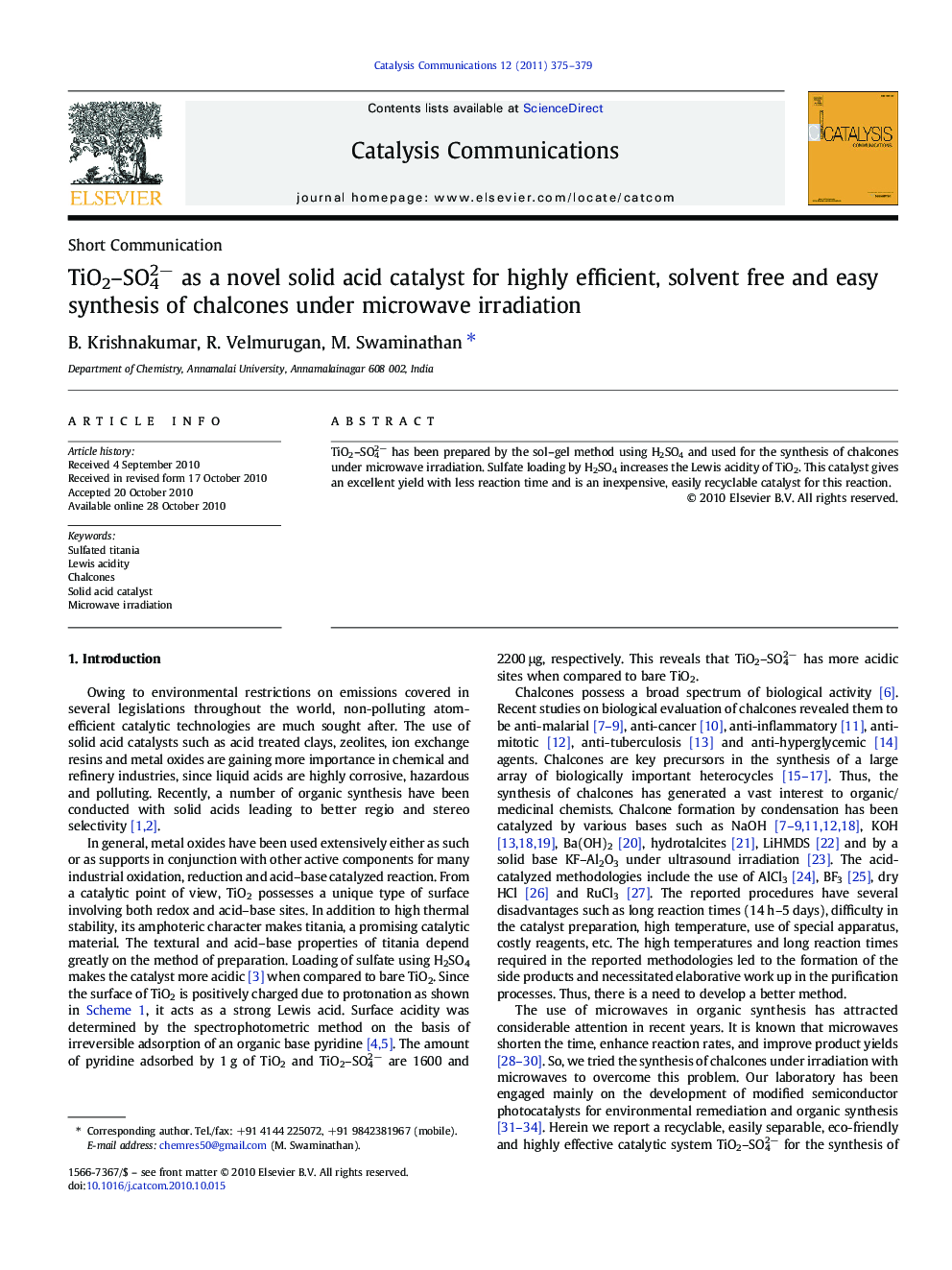| Article ID | Journal | Published Year | Pages | File Type |
|---|---|---|---|---|
| 50525 | Catalysis Communications | 2011 | 5 Pages |
TiO2–SO42− has been prepared by the sol–gel method using H2SO4 and used for the synthesis of chalcones under microwave irradiation. Sulfate loading by H2SO4 increases the Lewis acidity of TiO2. This catalyst gives an excellent yield with less reaction time and is an inexpensive, easily recyclable catalyst for this reaction.
Graphical AbstractSulfate loading by H2SO4 increases the Lewis acidity of TiO2. This catalyst gives excellent yield with less reaction time and it is an inexpensive, easily recyclable catalyst for the synthesis of chalcones under microwave irradiation.Figure optionsDownload full-size imageDownload as PowerPoint slideResearch Highlights► Chalcones possess a broad spectrum of biological activity. ► This letter reports a new solid acid semiconductor catalyst for chalcone synthesis. ► The use of microwaves in organic synthesis has attracted considerable attention in recent years. ► TiO2 possesses a unique type of surface involving both redox and acid–base sites. ► Sulfated titania has more acidic sites and so more efficient than bare TiO2. ► Easy product isolation and catalyst reusability make this reaction eco-friendly.
